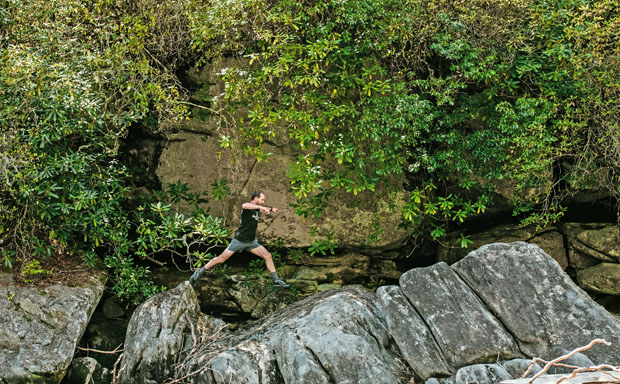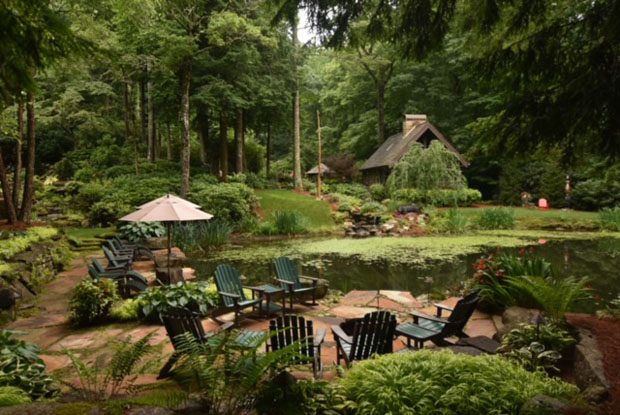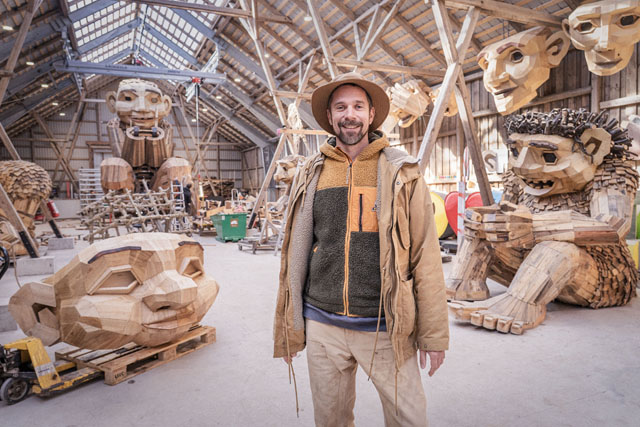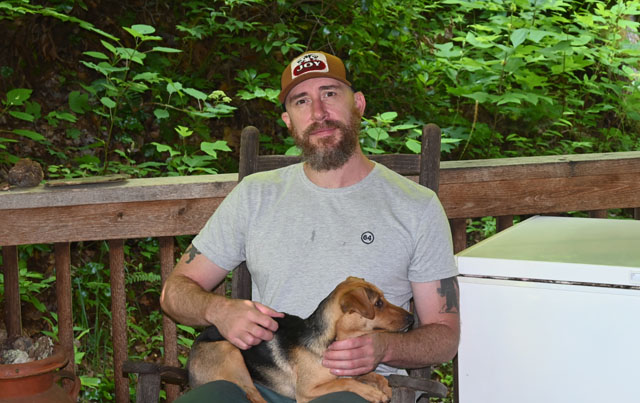Run Wild
03 Oct 2022
The ins and outs of trail running in the Blue Ridge Mountains
Story by Brendon Voelker

Each footstep thuds along a bed of soft pine needles as you wander through thickets of rhododendron, mountain laurel and a stunning display of spring and summer wildflowers. Carefully, your feet navigate roots, rocks and leaves. Your pace slows as you climb the final steps to the overlook. As your breathing stabilizes, you soak in the views from a bald mountain summit, the result of logging and mining that ended nearly 100 years ago. The views never fail to awe.
Running in the mountains takes many forms. To some, it’s a relaxing jog along forest service roads or gravel doubletrack, a term used to describe a path wide enough for a vehicle to pass through. To others, the thrill of running along technical and narrow singletrack is euphoric and addictive. No matter why you’re out there, trail running is arguably the most exhilarating and efficient way to explore the mountains. If the concept of running on trails is new to you, but you are interested to learn more, here’s where to start.
Shoes
Do:
Plan a visit to a professional running store such as Foot RX, Jus’ Running or Mountain Running Company. All three stores are the region’s most reputable experts on running, and each host a professional staff ready to pair you with your perfect running shoe. Heel-to-toe drop, toe box width, material and tread pattern are all factors to consider and while each store carries different brands, there is often more than one shoe that will fit your needs. Thankfully, compared to most adventure sports, shoes only range from $100 to $150, making the initial investment reasonably affordable.
Don’t:
Although it’s tempting to go online and purchase shoes you think will fit your needs, never break them in on a long run or race. Buy local, then wear them on shorter runs before increasing your mileage. Most reputable running specialty stores offer a window where you can return or trade in a shoe if it doesn’t work for you.
Clothing
Do:
Check the weather before you head out and consider variables such as afternoon thunderstorms, stinging plants, insects and extreme temperature swings. After all, the Highlands-Cashiers Plateau and much of the southern Appalachian mountains are considered a temperate rainforest, so a collapsible rain jacket is a great investment. Some areas near Gorges State Park in Sapphire can receive over 100-inches of rain per year.
In the summer, seek out loose, moisture-wicking clothing to keep cool even in the warmest of temperatures. In the winter, layering is the key. An insulating base layer, main layer and outer wind or weatherproof shell should be on hand to match the conditions. Even if you are cold at the start of your run, dress for 15 degrees warmer and plan to drop a layer in the first 20 minutes.
Don’t:
When it comes to clothing, layering is everything. Don’t wear anything you couldn’t toss in your pack or wrap around your waist. If the forecast calls for a 1% chance of rain, bring a jacket because rain may well find you somewhere along your run. Opt for polyester and other technical fabrics in the winter months, or a softer cotton blend in the summer. While this recommendation works for most, never wear anything new or unfamiliar on a longer run.
Food and Water
Do:
A 30 minute lap around your neighborhood may not warrant any food or water, but if you’re planning a run in the mountains, it becomes a major consideration. For runs under 90 minutes, a handheld water bottle or soft flask is ideal. A plastic water bottle can also suffice for newer runners and those in a bind. Always pack a small granola bar or energy gel, even if you don’t think you’ll need it. There inevitably comes a time where you feel good enough to go further than you expected. Finally, focus on eating on flat land or on a downhill, never uphill.
Don’t:
As with food and shoes, never try anything new on a long run. Use training runs or easy runs to experiment with your favorite foods and learn about triggers that may upset your stomach. Foods such as dried fruits, ginger candy and peanut butter packets tend to be a few of the easier foods to digest during a run. Just be sure to drink plenty of water to help your body process the calories efficiently.
Other Gear
Other considerations for running include GPS watches, heart rate monitors, waist belts for your phone and even headphones. While these tools can make certain aspects of your run more enjoyable or worthwhile, the only thing you really need to run is the desire to get out there. Don’t let yourself get caught up in the gear and lose track of the views you’re going to enjoy along the way.
Safety
If you’re heading out for a run, it’s always best to practice Leave No Trace ethics; take only pictures, leave only footprints. If you’re venturing deep into the mountains, consider running with at least one other person or a small group for safety. While one ankle roll may not prove catastrophic, having a second person alongside you can give you a sense of security and comfort should something go wrong. If you must run alone or simply prefer to, invest in a GPS tracker or Personal Locator Beacon (PLB) for your long runs and always tell someone of your route and when you expect to return. Most modern phones, whether Android or Apple based, offer the option to share your GPS location to anyone with a link or app.
Coaching
If trail running is something you are beginning to explore, hire a coach to create a customized training plan based on your needs. It is a worthwhile investment for both novice and expert runners alike, and a great way to improve your abilities as an athlete and hopefully stay injury-free. There are myriad options when it comes to training plans, and while there are plenty of free sources online, a coach can often build a plan around your work or travel schedule.
Races
Another way to get into trail running is to sign up for a local or regional race such as the Headwaters Trail Race in Panthertown Valley. A low-key event compared to most, a field of less than 100 runners have the option to run a 10, 30 or 60k course with stocked aid stations, a marked course and an on-site photographer to capture runners along the course. It’s a perfect opportunity for those on the Highlands-Cashiers Plateau to immerse themselves in the community and to meet like-minded individuals. In fact, not every runner in a trail race is as experienced as you may expect. Often, people sign up with the goal of meeting others and experiencing the sport under the umbrella of a safe and energetic atmosphere.
Guides
For those interested in hiring a running guide or booking a run tour, consider reaching out to White Dot Adventures, a local outfit based in Cashiers. As the region’s first and only permitted trail running outfit, their goal is to provide both novice and seasoned runners the opportunity to explore the most stunning areas of the plateau, as well as the greater-Nantahala and Pisgah National Forests. Led by Brendon Voelker, a native Texan who dove deep into trail running a decade ago, a small team of running guides are always available to pair you with your perfect adventure in the mountains - even if running isn’t your thing.













